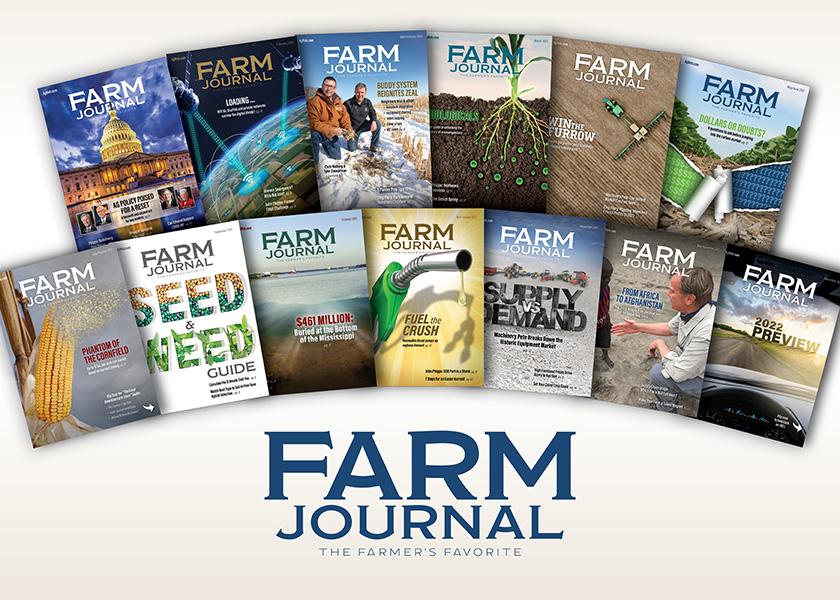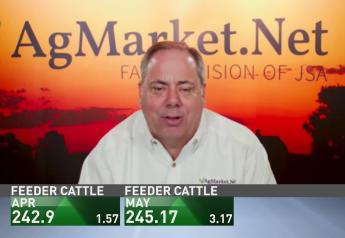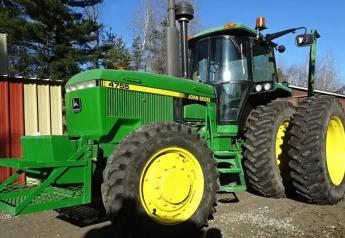Farm Journal: The Cover Stories of 2021

Farm Journal was first published in March 1877 for farmers in the bountiful agricultural regions within a day’s ride of the publication’s office in Philadelphia.
Today the magazine is published 12 times per year and delivered to 335,000 readers across the country.
This year marked some intense challenges and opportunities for farmers. Enjoy this look back at the key issues and opportunities farmers faced. You’ll see practical and actionable information about production agriculture, technology and policy. Here’s to a great 2022!
January
A New Environment for Ag Policy
Following a turbulent 2020, which included a global pandemic, hard-fought presidential race and numerous congressional changeovers, the path of U.S. ag policy is likely headed for an adjustment. The “Sonny” sided leadership of USDA and its motto to “Do Right and Feed Everyone” will see the return of the long-tenure of Tom Vilsack. Add in new and retiring ag committee members in Congress, and the future of ag policy feels poised for a reset at the start of this new decade.
February
Will 5G, StarLink and Private Networks Narrow the Digital Divide?
No internet connection. Connection interrupted. 404. These menacing alerts are a constant reminder of the haves and have nots of connectivity.
Even though the internet has been around for three decades, some 40% of the world is yet to get online. The Federal Communication’s Commission (FCC) estimates 19 million Americans lack access to high-speed internet. In rural areas, nearly a quarter of the population has no access.
As investments pour in for rural connectivity and 5G deployment, new opportunities are expected to bridge this momentous gap.
Mid-February
Hunt for ROI Stokes Change for Two Dakota Farmers
Brothers in arms. Tyler Zimmerman and Chris Walberg, lifelong friends and equipment-sharing neighbors, have overhauled their farm operations with increased crop diversity, intercropping, no till, cover crops, and livestock integration, all the while trading lessons learned from each challenge and success.
In 2014, Zimmerman placed his fields on a reduced input and soil health path, and the effort caught the eye of Walberg, who followed suit with significant changes tailored to his own ground. Intent on saving dollars through reductions in machinery wear, fuel costs, chemicals, and fertilizer applications, as well as increases in soil biology and organic matter, Zimmerman and Walberg, both 46, have changed agriculture horses in midstream, and say the results are improving long-term ROI—as well as igniting a new zeal for farming.
March
The Biologicals Race is On
On Derek Martin’s Illinois farm, an unlikely tool serves as one of the most valued pieces of equipment: a microscope. He trains the lens into the secret life of his fields, beneath a realm where hundreds of millions of bacteria and fungi teem in a single teaspoon of soil.
Martin has found the pick that turns the lock of profit on his operation — the realm of biologicals. And the mystery, he says, is not so mysterious at all.
Once pilloried as voodoo ag, biologicals have gained credibility in the past 15 years. The use of microorganisms to improve crop potential and soil health through the application of living-matter cocktails has attracted increasing grower attention, and in just a handful of years in the future, the use of biologicals could become commonplace.
April
Win the Furrow: Address the Factors Limiting Yield
As Indiana farmer Jason Wykoff tunes up his planter, checks fields and pores over nutrient and yield data, he is still wrestling with what will go into his in-furrow program.
“So often in production ag, we evaluate everything based off of final yield,” Wykoff says. “We have to start digging deeper into the components of that final yield, know the limiting factors and address those instead.”
As he and others are finding, some of those limiting factors can be addressed in-furrow via the planter. Building out an in-furrow program might require new equipment, new attachments and/or rethinking early-season plant nutrition and protection. But those investments don’t have to break the bank.
May-June
Dollars or Doubts? 9 Questions to Ask Before Jumping into the Carbon Market
Corn was $3.20 per bushel when Kyle Mehmen signed his first carbon contract 18 months ago. Today, corn prices are above breakeven, which buoys his spirits.
Even so, Mehmen, general manager of MBS Family Farms, based in northeast Iowa, is still bullish on carbon and has crop acres enrolled in four different programs.
“Carbon markets pay for practices I already believe in and use — no-till and cover crops,” he explains. “They’re a risk management tool that provide an additional income stream.”
But Mehmen is practically an anomaly. Only 1% of farmers nationally have signed a carbon contract, though 30% to 40% are aware of the opportunities, according to a recent Purdue University Ag Economy Barometer survey.
July-August
A Phantom Lurks in Your Corn Fields
As harvest approaches, it’s important to recognize there’s an invisible enemy lurking in your corn fields. Phantom yield loss occurs when a crop is allowed to naturally dry down to a certain point before harvest.
Does the elusive dry matter lost equate to bushels? If so, is it enough to justify switching up harvest timing and paying for drying? Those are the questions Farm Journal Field Agronomist Missy Bauer set out to answer in 2019 and 2020.
Today’s genetics have changed, Bauer explains, and kernels are taller, wider and deeper.
September
The Battle for Clean Fields Tops Billions of Dollars
The cost of fighting weeds is growing. Herbicide expenses have risen by nearly $15 per acre for corn and more than $30 dollars per acre for soybeans over the past decade, according to the latest data of estimated costs of crop production in Iowa.
“The cost of controlling weeds is increasing much more rapidly than other production costs,” says Bob Hartzler, retired Extension weed specialist for Iowa State. “If you look at soybeans in the last 10 years, the herbicide costs have basically doubled but if you look at the percent of total expenses for producing that crop, it's more than doubled.”
October
How Dredging the Mississippi River Could Uncover $461 Million
Almost half a billion dollars is buried at the bottom of the Mississippi River. A massive effort is underway to dredge the lower Mississippi along its final 250-mile stretch, and the results could provide major financial benefits to U.S. farmers.
At ports along the mouth of the Mississippi, most ships loading soybeans can carry a maximum of 2.4 million bushels, and any additional weight in the hold puts the vessels in danger of scraping the riverbed. However, a mere extra 5' in depth allows a ship to squeeze in 2.9 million bushels, at a small increase in transport costs.
Translation: Digging the depth of the lower Mississippi from 45' to 50' could generate $461 million annually for the U.S. soybean industry — independent of supply and demand.
Mid-October
Fuel the Crush: Renewable Diesel Pumps Up Soybean Demand
Big change is afoot. Those soybeans growing in your fields have traditionally been valued by the meal they produce and animals they feed. Soon their oil content could pad your pocketbook.
Public policy to reduce carbon emissions is fueling demand for bio-based fuels. Low Carbon Fuel Standards are in place in California and Oregon, and several other states are considering them. These rules call for conventional petroleum fuels, such as gasoline and diesel, to be replaced with more carbon-friendly fuels.
November
Supply Versus Demand: Machinery Pete Breaks Down the Historic Equipment Market
No matter what word you use — hot, unique, challenging, historic — the machinery market is idling in a field unlike anything the industry has seen for decades.
“Today’s machinery market is so hot, this is only the fourth time ever in my 32 years of tracking used equipment values I’ve come out with a strong advisory statement,” explains Greg Peterson, founder of Machinery Pete. “If you have used equipment in good condition, there may never be a better time to sell.”
Mid-November
Africa to Afghanistan: Ambassador Kip Tom’s Lessons from the Global Food Crisis
The cool mountain air nipped at Kip Tom’s hands as he grasped the single lever of a crudely made plow tucked behind two oxen. His instructor smiled, motioning him to push down as the animals walked. Tom shoved the point into the rocky soil and saw it start to turn the earth.
As the soil and bits of trash rolled over, his mind flashed back to his farm in Indiana where his grandfather had spent countless hours behind a similar team. Generations of hard work along with the development of mechanization and modern farming practices helped Tom to eventually grow his farm into a leading-edge operation.
Back in Afghanistan, Tom heaved all he had into the beam of the plow, but the hard earth and untrained hands saw his furrow drift off line. His Afghani teacher smiled as if to acknowledge the task’s difficulty. With a nod and several unrecognizable words, he took the implement back in hand.
December
Foresight for 2022: Watch These 4 Megatrends
You have two choices. As trends change, you can adapt your farm and capitalize on the opportunities, or you can stay the course and watch your business decline. “Today is the slowest rate of change we will experience,” says Jack Uldrich, a futurist and former naval intelligence officer. “Our world is not slowing down; the pandemic unexpectedly accelerated the future by five to 10 years.” What trends will shape the next year or five? Watch these areas.







